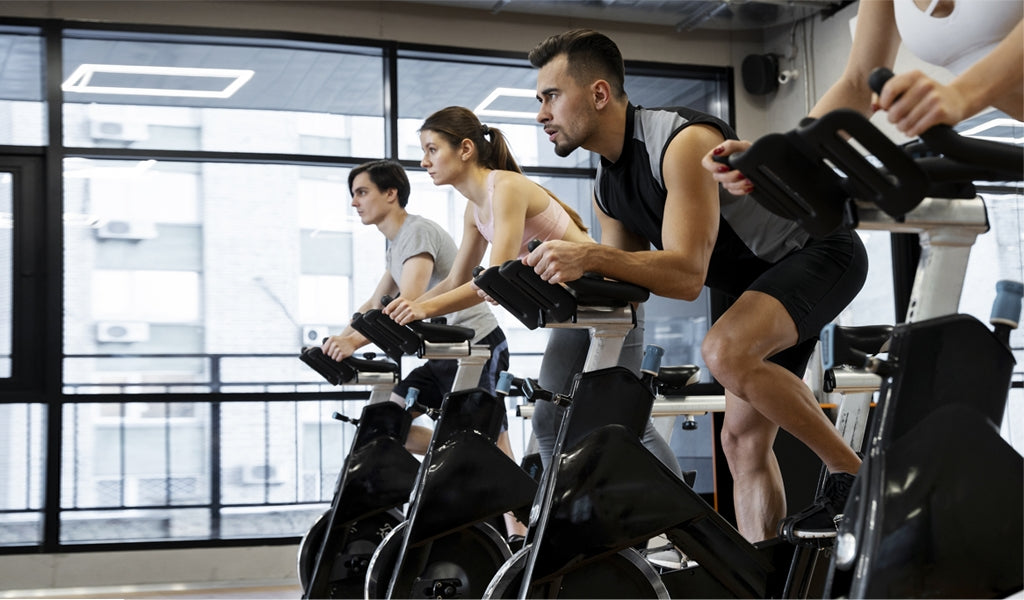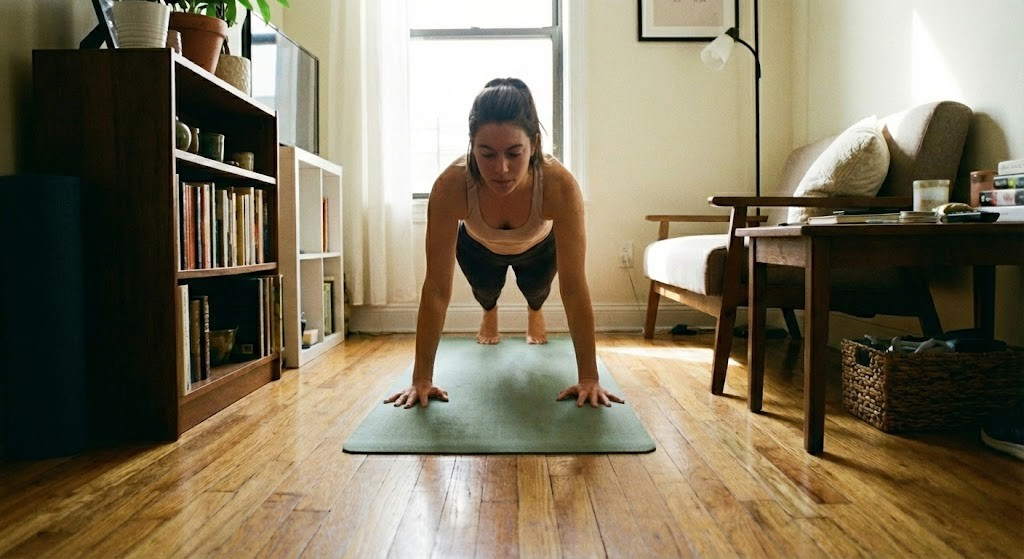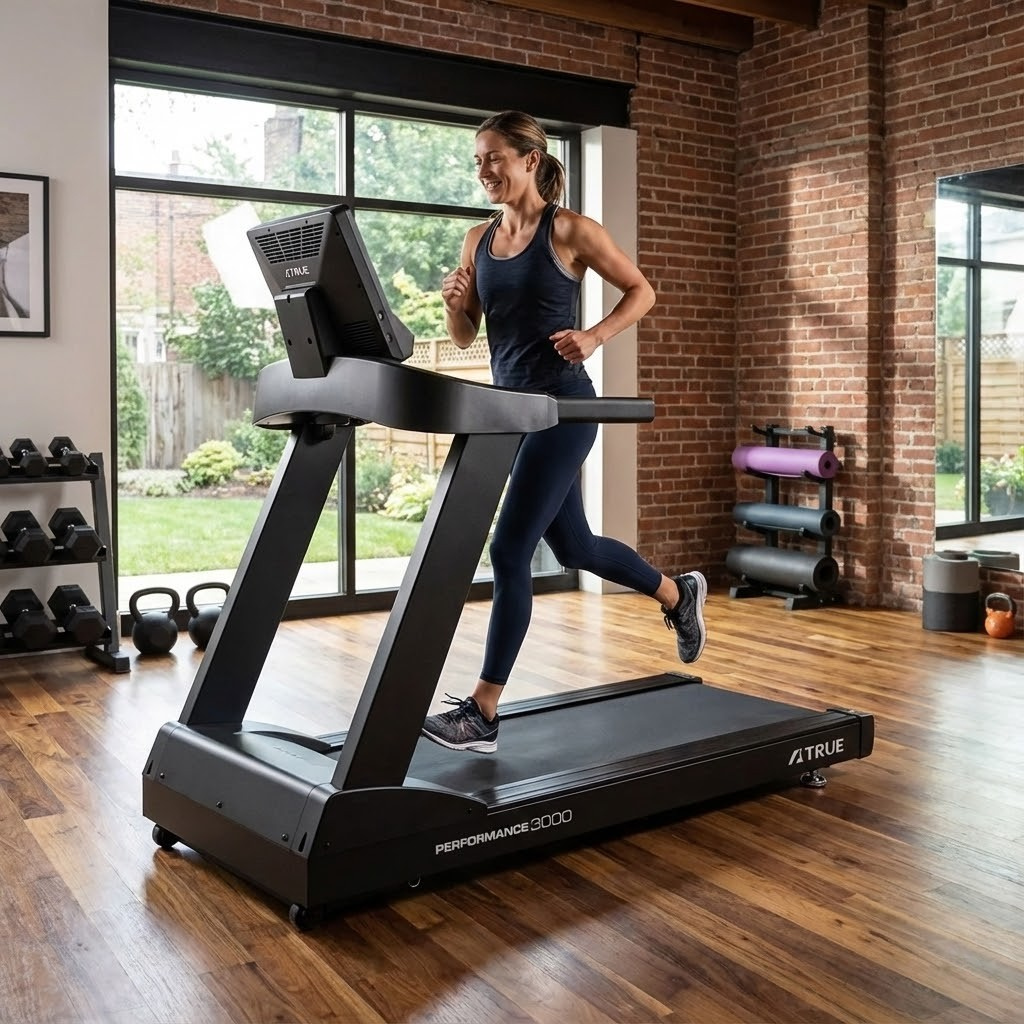From New York gyms to California garages, cardio machines are part of everyday fitness. They’re trusted for calorie burn, blood pressure control, and blood sugar management.
However, interestingly and unfortunately, treadmills alone send more than 22,000 people to U.S. emergency rooms each year, according to the Consumer Product Safety Commission. Yes, the simplest most and most used cardio machine is still injuring quite a few.
So, the problem isn’t in the machine design and lack of familiarity alone — it’s rushing in without knowing how to use them safely.
Precautions Before You Step On Any Machine
There are a few common habits/ precautions for all exercise machines that go a long way toward keeping you safe.
First, one needs to know the machine. Talk to the salesperson and ask them to walk you through the details, so you can get a full picture of its features and their impact on your workout quality.
Next, warm up with light movement to loosen joints, and cool down afterward to help muscles recover. Now that might have come across as cliché, a commonly known fact, but you’d be appalled to know the number of people who still, willingly skip on these 2 parts or haste through them.
Lastly, adjust every setting to your body so you can have better control, for instance, bike seat height, treadmill incline, and elliptical stride; keep them all aligned with your body.
Keep your posture upright and shoulders relaxed, and resist the temptation to lean on rails. Build intensity gradually instead of chasing big jumps in speed or resistance. Stay hydrated, stay alert, and use safety features like treadmill stop keys.
Think of these as your universal rules before tackling any specific machine. Now let’s talk about machines you love and almost use in routine, and how to use them safely so you don’t contribute to the injury stats.
Safe Workout Guide for Most Popular Cardio Machines
Generic precautions are important, but they don’t always cover the full picture.
Each cardio machine carries its own risks, and the injuries reported on them in gyms and hospitals are surprisingly specific.
Treadmill falls and burns, spin-bike knee pain, rowing-related back strain, etc, that’s why we’ve laid out the most popular and commonly used cardio machines in the US and the most commonly linked injuries each one, and the practical steps you can take to avoid them.
Treadmills
The most loved, most bought, and yet the most misused cardio machine.
Treadmills top the charts in U.S. search interest and ownership. They’re versatile, but a lack of enough mindfulness leads to falls, friction burns, shin splints, and sore knees.
The safest approach to use them is to start with walking before moving into faster runs, attach the safety clip to your waist, and leave a clear space behind the deck. Moreover, keep your posture tall instead of holding the side rails.
Shoes can also make a difference. Cushioned running shoes protect your joints and prevent foot injuries. And the golden rule: increase mileage or incline gradually, not all at once.
Spin Bikes
These are most popular for high-intensity indoor workouts; however, they also come with a higher risk without proper setup.
Spin bikes exploded in popularity due to Peloton and boutique cycling studios. They torch calories, but improper form or extreme resistance can leave knees and backs aching.
The right seat height is essential while using them. Your knees should be slightly bent at the lowest pedal position, and keep your hips steady during out-of-saddle intervals instead of rocking side to side. And don’t dive into all-standing climbs right away; alternate seated and standing work once you have a solid base.
Pro Tip: Stretching quads and hips after class helps keep pain away.
Stationary Bikes
Stationary bikes are popular as a low-impact alternative to spin bikes, but they still need the right setup to avoid injuries.
Traditional upright and recumbent bikes are joint-friendly but can still cause knee trouble if fitted wrong.
For instance, a seat set too low loads the kneecap unnecessarily. Also, aim for a small bend in your leg at the bottom of each pedal stroke, and spin at a smooth cadence instead of grinding through resistance. Don’t slouch on recumbent models; sit upright so your back stays supported.
Ellipticals
They are one of the best cardio workout machines at the gym, great for a low-impact workout, but that doesn’t mean “No Risk”
Ellipticals are often chosen by people wanting to protect their knees and hips, but leaning heavily on the handles or pressing only through the toes can create discomfort, eventually leading to injury.
So, stay upright, distribute weight across your whole foot, and let the arms move naturally without pulling. Best start with moderate resistance and stride length, then increase once your body adapts.
Rowing Machines
Rowing machines, hands down, offer great full-body workouts, but they can be tough on the back if not properly used.
For instance, rowers train legs, core, and arms in one motion, but they’re notorious for back injuries when technique breaks down. The key is to follow the correct sequence: legs driving first, then a hip hinge, then arms pulling.
Also, keep the spine neutral, hinge from the hips, and avoid collapsing forward. Beginners should keep stroke rates moderate, around 22 to 26 strokes per minute, and should focus on smooth rhythm rather than power alone.
Stair Climber
These small steps cardio fitness machines have a low impact, yet can put a big load on the knees. Here’s how.
Climbers look simple, but leaning on the rails or stepping only with toes overloads the kneecap. So, to avoid it, stand tall, grip the rails lightly, and let your whole foot step down.
Start with short 5–10 minute bouts instead of marathon climbs, and build endurance gradually to give your joints time to adapt.
Commonly Asked Safety Questions
-
Why do so many treadmill injuries happen?
Most injuries come from 3 things: people losing balance on the moving belt and friction burns when skin gets caught (kids are especially vulnerable). Jumping straight into high speeds or steep inclines without warming up or building a base.
Many accidents also happen when people hold their phone or lean on the side rails instead of staying centered.
-
Is it better to ditch the treadmill for a master?
Some people may find the treadmills too repetitive or hard on joints, so it’s good to try the stepmill. They mimic hiking while reducing impact.
-
What’s the safest cardio for sore knees?
Stationary bikes are often top picks. Rowers can also be good, as long as the technique doesn’t overextend the knees.
-
What's the biggest injury risk when rowing?
Repeated poor form, like rounding the back, can lead to back injuries. Strong core engagement is essential during rowing workouts.
-
Do cardio machines limit real-life movement?
If you train exclusively on machines, you might neglect core and stabilization muscles, so mix in free-weight or body-weight work for balance.
Key Takeaway
We’d suggest reading the whole article to catch every detail on a safe use of your favorite cardio machines, but if you are skimming, here are our 2 golden cents of wisdom.
First, respect progression. Almost every machine-related injury comes from doing too much, too soon. Second, always check your setup. Whether it’s bike seat height, treadmill safety key, or rowing foot straps, taking one minute to adjust can save you weeks of recovery.
And if you’re still looking around to buy cardio equipment that’s safe and effective, keep in mind that safe training begins with the right setup. At The Fitness Outlet, we don’t just sell machines, we install them properly, back them with solid warranties, and provide local support so you can focus on safe workouts instead of worrying about equipment issues.





Share:
The Ultimate Guide to Choosing Home Exercise Bikes for Maximum Results
Top 7 Benefits of Using Rope Pulling Machines for Strength Training